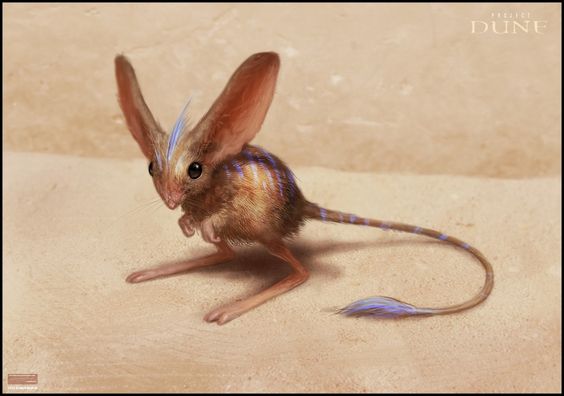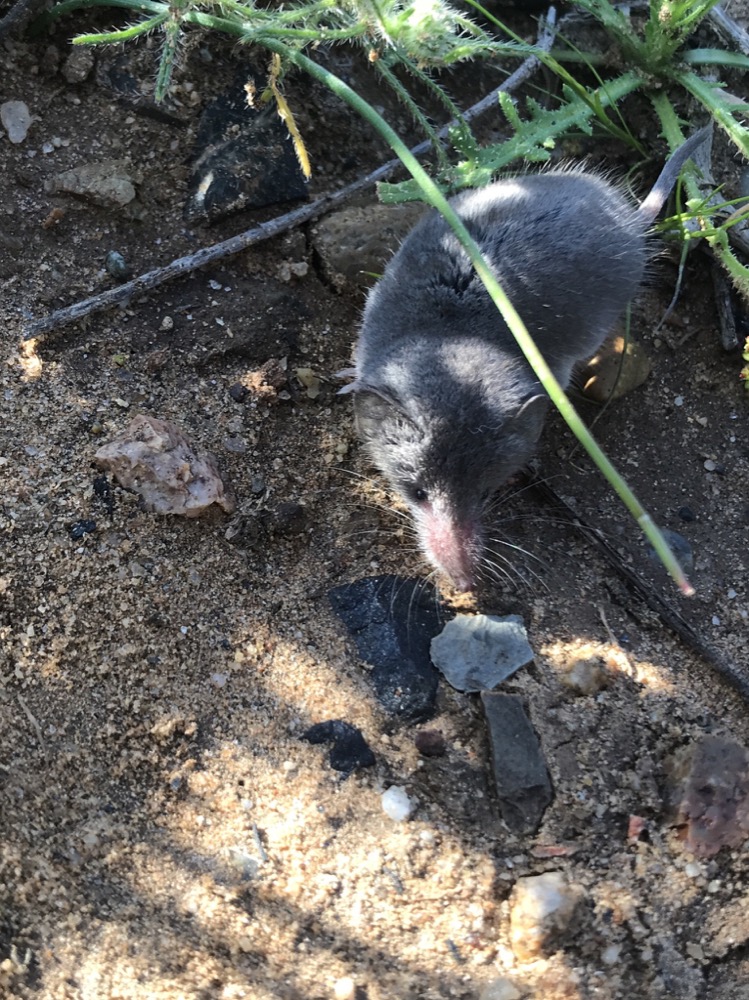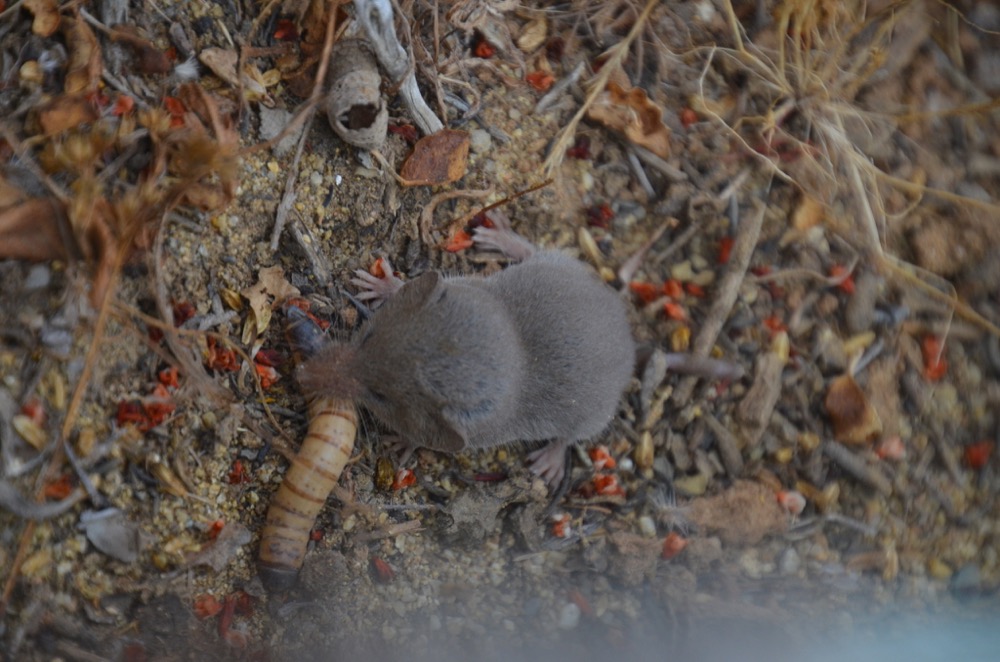Muad’Dib is a fictional animal from Frank Herbert’s Dune. Its description most closely resembles a kangaroo rat or possibly a pocket mouse. They are tenacious desert survivors and are highly respected by the Fremen tribes on the desert planet of Arrakis. While we aren’t exactly the barren lands of the desert planet in Dune, the plants and animals at Cabrillo National Monument need to have some pretty specialized traits to survive the harsh drought and desert-like conditions here.

Photo courtesy of Mark Molnar http://markmolnar.com/project-dune/ - an artist’s rendering of the animal Muad’Dib from Frank Herbert’s Dune.
Like its cousin, the mighty Muad’Dib, our local rodents are impressive desert survivors. Similar to the vital stillsuit used to keep humans alive in the Arrakis desert, our small rodent friends are able to store and conserve water with amazing proficiency. They can filter impurities through highly efficient kidneys and have highly adapted respiratory systems.
The California and San Diego pocket mice (Chaetodipus californicus and C. fallax respectively) have another nifty adaptation, fur-lined cheek pouches for storing seeds to take back to their caches. These pouches isolate the seeds from the mouth to avoid losing precious water to the seeds. Pocket mice are so efficient at conserving water they can survive on seeds alone and rarely ever need to drink fresh water.
 NPS Photo/Don Endicott – a San Diego Pocket Mouse (C. fallax) among the brush at Cabrillo National Monument.
NPS Photo/Don Endicott – a San Diego Pocket Mouse (C. fallax) among the brush at Cabrillo National Monument.On top of highly efficient kidneys and adapted respiratory systems, shrews are known for having incredibly fast metabolisms. Some have heart rates of up to 1000 beats per minute. Our local desert shrew (Notiosorex crawfordi) has a much more modest metabolism with a heart rate of a mere 500 bpm (that’s more than 8 times faster than the average human heart rate!). Still, this lowered heart rate allows it to function more resourcefully in a harsh environment. They also do most of their hunting in the cool nights and are voracious predators of insects, where they get much of their water.
 NPS Photo/Stephanie Root – the Desert Shrew (Notiosorex crawfordi)
NPS Photo/Stephanie Root – the Desert Shrew (Notiosorex crawfordi) NPS Photo/Warren Tam – with its fast metabolism, the small Desert Shrew is a voracious eater. It is seen here eating a mealworm.
NPS Photo/Warren Tam – with its fast metabolism, the small Desert Shrew is a voracious eater. It is seen here eating a mealworm.And if the previously mentioned traits weren’t enough to show how tough these little mammals can be, the Desert Woodrat simply uses brute force to fight off would be competitors for water resources such as a Shaw’s agave or Dudleyas, which store large quantities of water in their fleshy leaves.
 NPS Photo – a Desert Woodrat caught using a motion-sensored camera trap at Cabrillo National Monument.
NPS Photo – a Desert Woodrat caught using a motion-sensored camera trap at Cabrillo National Monument.You do not take from this universe. It grants you what it will. - Frank Herbert, Dune
